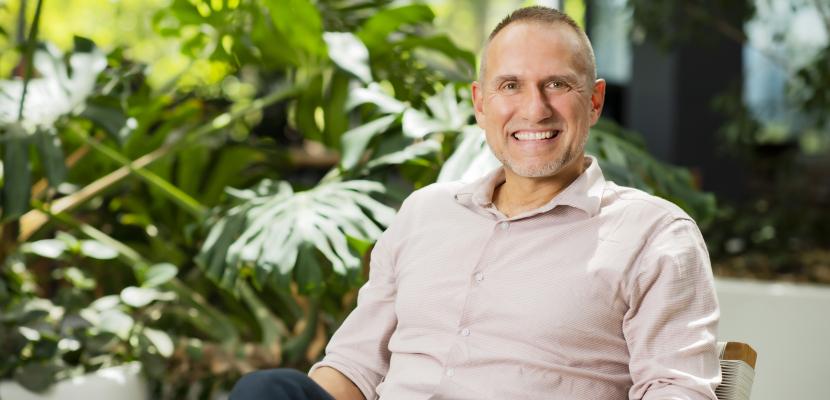
Shane Hearn has always followed his passion.
Despite attending a specialist music school, the only instrument he wielded with any regularity was a cricket bat.
“I have no regrets except for that one,” says Bond’s new Professor of First Nations Health.
“I remember saying to my teacher ‘I don’t want to read music I just want to hit the drums’. I was a mad U2 fan and all I wanted to do was play Sunday Bloody Sunday.
“But cricket was a passion as well, and my love of music never left me.”
It’s why he joined the Board of the Australian Children’s Music Foundation, working with the legend of Australian music Don Spencer bringing music education to Indigenous communities.
It’s one of many strings to the proud Noongar man’s bow. He’s also on the board of First Nations Media Australia and the Jilya Institute for Indigenous Mental Health.
All contain a common thread – supporting and learning from country and community.
“As a Noongar person from Western Australia, I learnt as a young man at Burlong Pool, where my uncles would take us out fishing, learning ceremony engaging culturally the way that our ancestors would have, so we would move with the land rather than on top of it, speak Noongar language and call out loud to announce that we were coming in to learn,” he says.
“At the time as a 14-year-old with your cousins all you want to do is kick the footy and muck around, but a lot of that resonated strongly as I later started to develop my public health learning at the University of Sydney.
“I meshed those two worlds into what was a pretty good program around Aboriginal health pre colonisation, then colonisation and its impact and how it explains it.”
Professor Hearn was driven to pursue a career in public health for the most personal of reasons.
“The passion to teach health was there from an early age.
“I lost a number of relatives early in life, for different things, but it was always an early death, so I wanted to understand more and contribute and give back,” he says.
“The most important part of closing the gap is health. We don’t have enough Aboriginal doctors, nurses or health practitioners so we need to work in partnership and co-design.”
Bond’s unique model that allows for fresh approaches was part of the attraction for someone whose first love is teaching and sharing experiences with students.
“Some of the other big universities are not as flexible and when I assessed the model here it is flexible. It’s also got one of the highest diversity academic groups and student groups in the country,” he says.
“It just made sense to come to a university that seemed like it was a bit ahead of the curve … Bond had the class to say ‘we’re confident in what we’re doing and might want to do it a little bit differently and we don’t want to be hamstrung around that’.
“That was quite a lure, I like that level of confidence to give people the space to think.”